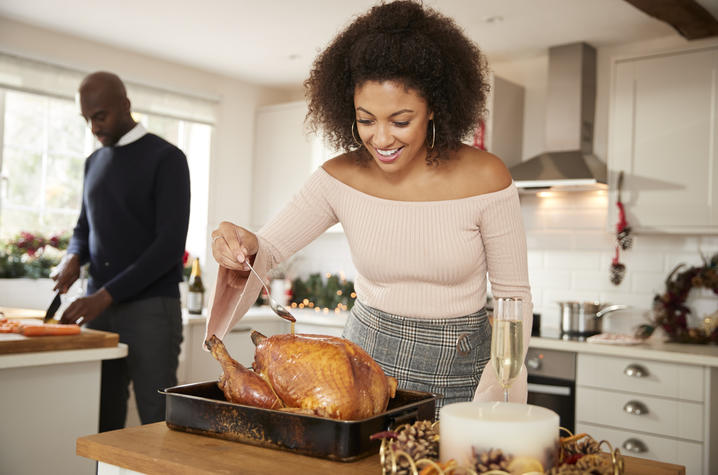How to Safely Prepare Your Thanksgiving Turkey

The University of Kentucky Public Relations and Strategic Communications Office provides a weekly health column available for use and reprint by news media. This week's column is by Sandra Bastin, Ph.D., professor in the Department of Dietetics and Human Nutrition in the UK College of Agriculture, Food and Environment.
LEXINGTON, Ky. (Nov. 22, 2021) — During the holidays, cooking is a very common activity when gathering with family or friends. It is important to instill healthy habits while cooking to ensure a safe and delicious holiday, including proper handling and cooking of your Thanksgiving turkey to avoid foodborne illnesses.
The United Stated Department of Agriculture (USDA) has some tips on how to safely thaw and prepare your turkey or other poultry. There are three recommended ways to thaw your turkey: refrigerator, cold water or microwave.
When using a refrigerator, poultry requires approximately 24 hours of thawing in the fridge for every four to five pounds of bird. You can store the turkey in the fridge for another one to two days after it's been thawed.
When using cold water, submerge the bird in the water and change every 30 minutes. Thawing this way takes approximately 30 minutes per pound of bird. Cook the turkey immediately after thawing.
When using a microwave, use defrost function based on weight. Cook immediately after thawing.
Here are the four steps to properly cooking your turkey:
- Clean:
- Wash your hands for 20 seconds with soap and warm water.
- Make sure your utensils, plates, countertops and cutting boards are thoroughly washed.
- Do not wash your turkey — this is because bacteria can be present inside and outside a turkey, and it cannot be washed off the bird. Cooking is the only way to destroy this potentially dangerous bacteria.
- Separate:
- Separate raw turkey from fresh food, and use separate cutting boards, plates and utensils.
- Wash items that touch raw meat with soap and warm water.
- Cook:
- Your bird is not safe until it reaches 165° F; you cannot tell if it's done by the color.
- Any stuffing cooked inside the bird should reach 165° F as well.
- Use three places to check the temperature: the thickest part of breast, innermost part of wing and the innermost part of thigh.
- When turkey is removed from the oven, let it stand for 20 minutes before carving it.
- Chill:
- Refrigerate leftovers within two hours.
- Leftovers will keep in the fridge for three to four days.
- You can freeze leftover turkey, but use within six months for best quality and reheat thoroughly to a temperature of 165° F.
Please note: bacteria that can cause foodborne illnesses can’t be smelled or tasted. For more information about food safety, visit https://ask.usda.gov.
As the state’s flagship, land-grant institution, the University of Kentucky exists to advance the Commonwealth. We do that by preparing the next generation of leaders — placing students at the heart of everything we do — and transforming the lives of Kentuckians through education, research and creative work, service and health care. We pride ourselves on being a catalyst for breakthroughs and a force for healing, a place where ingenuity unfolds. It's all made possible by our people — visionaries, disruptors and pioneers — who make up 200 academic programs, a $476.5 million research and development enterprise and a world-class medical center, all on one campus.




